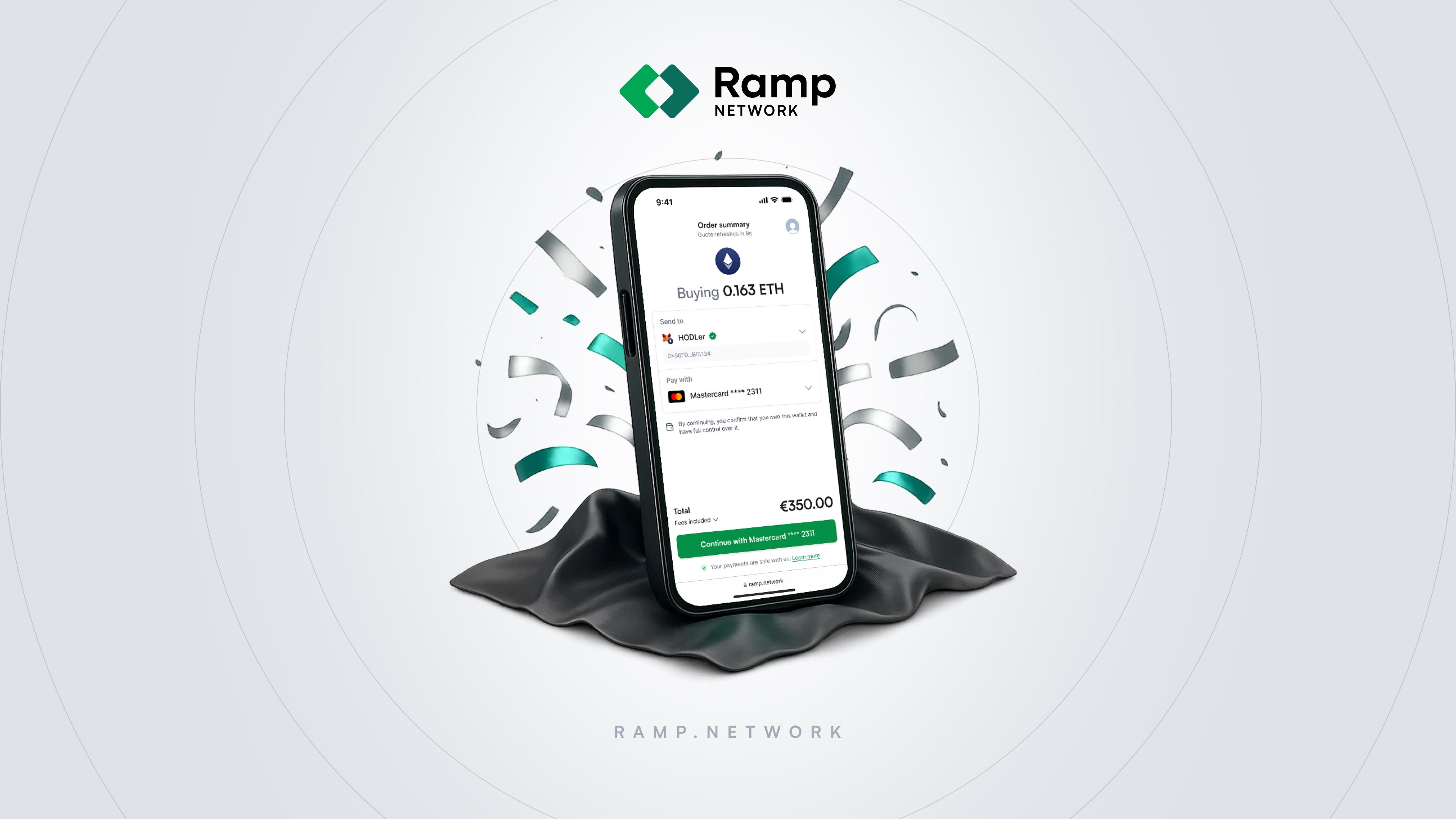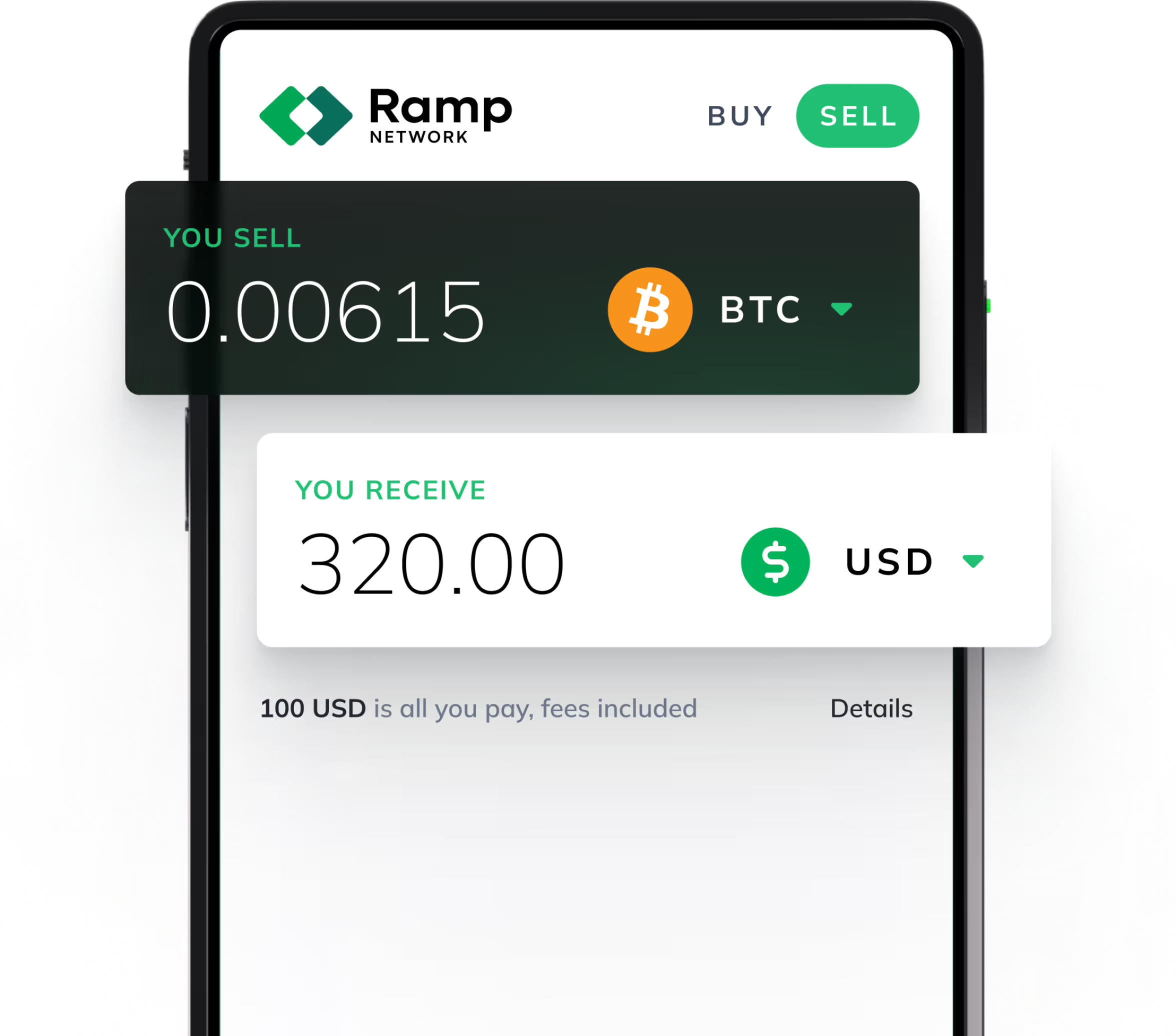

For a long time, entering the crypto space has been a complex and lengthy process, involving many different steps and multiple parties. The barrier to entry was just too high. Explaining how wallets, exchanges, tokens, and various different solutions work to any beginner would make their heads spin.
In a way that’s still the case, with users having to go through different wallets and exchanges, having to learn how to actually trade crypto assets, and wasting time and money with multiple transactions across many applications.
And that’s a problem, because the seamless flow of economic value between cryptocurrencies and fiat money is key to achieving the promises of blockchain and Web3.
So for the last few years, making crypto accessible and easy to use has been the most critical challenge of any project in this space.
Luckily, there’s been quite a lot of progress - and the industry is now able to welcome an increasing number of users to the crypto revolution.
In this article, you’ll learn everything you need to know about crypto on-ramps and crypto off-ramps so you can make the leap with confidence.
- What is fiat money?
- Why crypto ramps matter
- What is a crypto on-ramp?
- What is a crypto off-ramp?
- What problems do crypto ramps solve?
- How do crypto ramps work?
What is fiat money?
First, the basics. Fiat money is the kind of money you use every day, generally issued by a national government, like the US Dollar, the Euro, and the British Pound. The overwhelming majority of the world’s economy runs on fiat.
Even though fiat exists in physical form (banknotes, coins), the vast majority of the money supply only exists digitally, in databanks controlled by commercial and central banks.
Fiat money gets its value from the belief that a government will make good on its financial obligations and general management of an economy - which history shows hasn’t always been the case.
In the fiat system, only a few actors (commercial and central banks, mostly) are in charge of issuing new money, and this process isn’t known for its transparency or accountability.
That’s why fiat is prone to mismanagement and cheating, which usually leads to rampant inflation and wealth inequality.
Why crypto ramps matter
Being able to transfer value between the crypto space and the fiat realm is essential to expanding the value of Web3 to the $96+ trillion fiat economy.
It’s even where we get our own name from - Ramp Network.
We need ramps to connect the legacy financial system to the decentralized, next-generation internet of money.
If crypto and Web3 are to achieve their full economic potential - which is something we believe in - then we need crypto to fiat ramps everywhere.

But it’s not just about making it possible. Going the extra mile and making it actually easy is the real challenge, and one we’ve spent the last few years perfecting here at Ramp Network.
What is a crypto on-ramp?
A crypto on-ramp (sometimes also spelled crypto onramp) is a system that allows for economic value to flow from fiat money into cryptoassets. In a nutshell, it’s a series of steps users can take to exchange fiat for crypto.
On-ramp doesn’t necessarily refer to a single, unified platform. Historically, on-ramping has taken place across multiple platforms and involves countless steps. This is what on-ramping looked like a few years ago:

This experience has improved significantly in the last few years, and companies like Ramp Network have created much more seamless, end-to-end solutions to this problem.
These solutions have users perform all necessary steps via a simplified, straightforward platform, directly from within the DApp they’re using.
The term on-ramp is increasingly associated with these solutions, which are being widely implemented where the crypto and conventional economies meet.
What is a crypto off-ramp?
A crypto off-ramp (sometimes also spelled crypto offramp) is the exact reverse of an on-ramp. It’s a mechanism that allows for economic value to flow from cryptoassets back into fiat money. In a nutshell, it's the side of the bridge that allows users to cash out of crypto.
Much like with crypto on-ramp, the term crypto off-ramp is increasingly becoming associated with end-to-end solutions for exchanging cryptocurrencies for fiat money - and quite often, on-ramp providers also offer off-ramp within their suite (as is the case with Ramp Network).
What problems do crypto ramps solve?
If cryptocurrencies are the backbone of the idea of a Web3 (enabling what author and researcher Andreas Antonopoulos calls “the internet of money”), crypto ramps are a bridge between this new world and the old - a world where economic value still flows through a closed, friction-full, and frankly byzantine financial system.
Perhaps one day we won’t need bridges and the crypto economy will simply be the economy. But while we do, we can at least make them beautiful and solid.

The truth is, despite growing crypto adoption, the fact is that for now the overwhelming majority of the global economy still runs on these legacy fiat rails.
Web3 must tap into this value (and this economy) in order to gain traction and become the next iteration of the internet. That’s where ramps come in.
For everyday users, the steep learning curve and amount of effort it takes to purchase or sell cryptocurrencies can turn all but the most committed from actually using Web3 apps. Crypto ramps greatly reduce the time, complexity, and cost involved.
On the business side, this friction and cost can limit growth and even hinder many Web3 use cases - particularly so for less finance-centric applications. The cost of implementing and maintaining your own fiat-to-crypto rails (across the entire globe) is simply not realistic for all but the largest projects.
For these, an end-to-end crypto ramp like Ramp Network presents a turnkey solution that allows them to easily turn their applications into a two-way bridge between crypto and fiat.
This frees developers to focus on their business case, instead of having to duplicate and maintain direct financial rails in every jurisdiction they want to operate.
How do crypto ramps work?
An end-to-end crypto ramp solution is, in essence, a simplified and maximally optimized exchange/swap mechanism that sits between crypto and fiat - two fundamentally separate economic paradigms.
Crypto ramps like Ramp Network handle all the steps involved in moving between these two realms in one unified, unbroken experience.

This approach abstracts most of the trade-related steps from the end-user, packing all of them in a single flow. These steps include:
- Identity verification;
- Compliance checks;
- Asset pairing;
- Liquidity and reserves management;
- Counterparty matching (when applicable):
- Payment processing;
- Delivery of funds.
However, unlike traditional exchanges (which are optimized for trading), crypto ramps focus on speed and ease of use.
Unless you're a professional trader, these attributes make crypto ramps more efficient than exchanges for most use cases.
This efficiency comes from specialization and scale. Crypto ramps do one thing really well, and - this being crypto - do it en masse across the globe.
Why use crypto ramps?
End-to-end crypto on-ramps and off-ramps certainly aren’t for everyone.
Professional traders or use cases that revolve around high-frequency exchanges may find it suboptimal to use a crypto ramp every time.
The same goes for "high-rollers" and massive orders, where capital efficiency is more important than ease of use.
However, that’s not the case for most people and businesses.
For everyday users, crypto ramps drastically reduce friction, allowing them to focus on actually using crypto instead of in the process of buying and selling. This has clear positive implications for crypto adoption and real-world usage.
On the business side, much like PayPal and Stripe have done for e-commerce, crypto ramps enable Web3 entrepreneurs to focus on what they do best instead of trying to reinvent payments every time. This leads to more innovation and a better user experience across the board.
Exchanges and crypto ramps are complementary, with each having optimal use cases and with both contributing to boosting Web3 adoption - and ultimately, bringing about a more decentralized future.
We hope this helps clarify what crypto on-ramps and crypto off-ramps are.
If you need a crypto on-/off-ramp for your app, please get in touch, and let's ramp it up to Web3 together.















.png)
.jpg)


